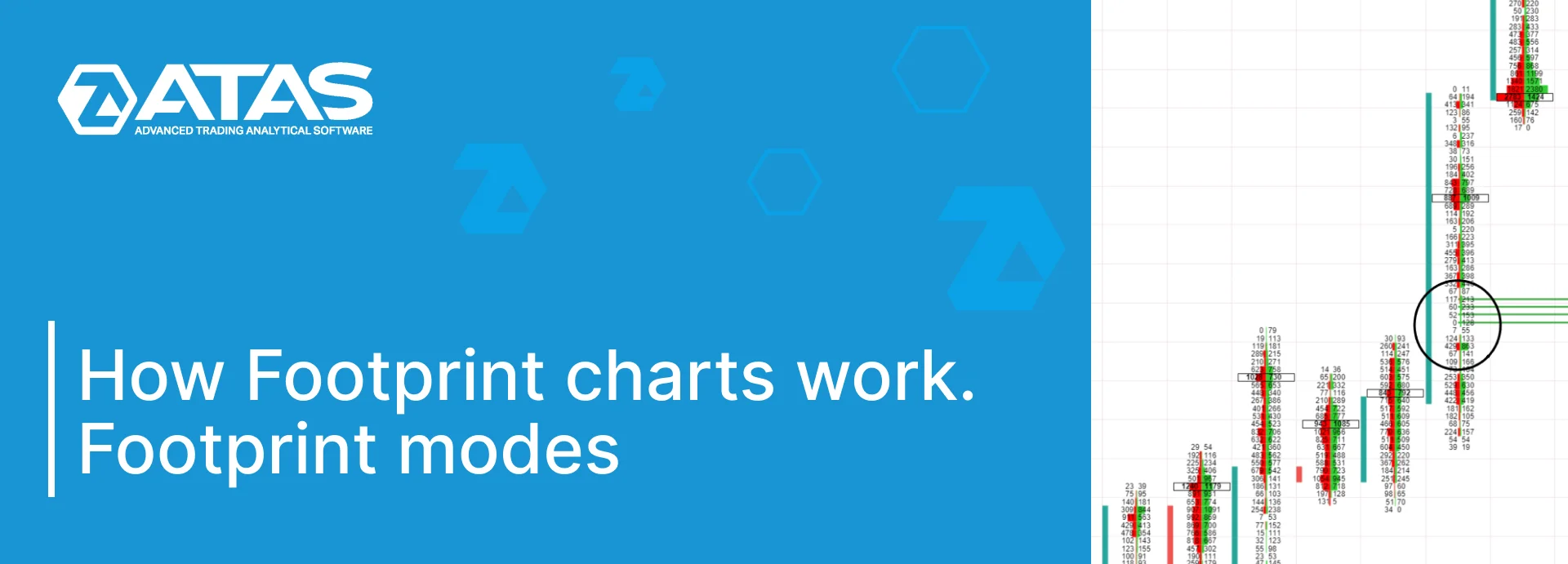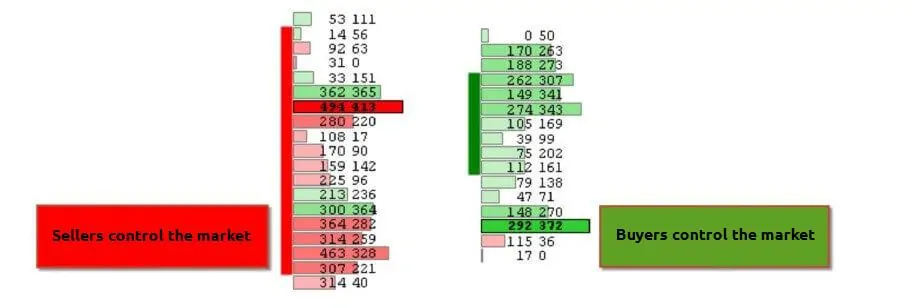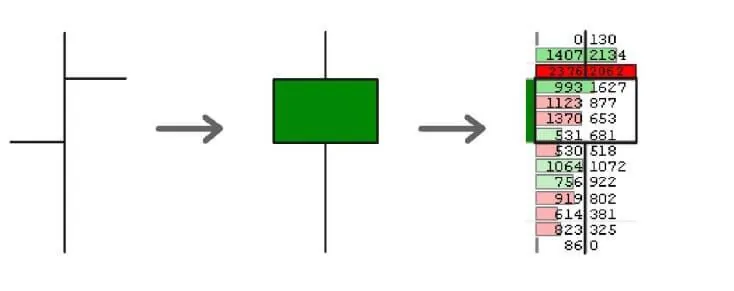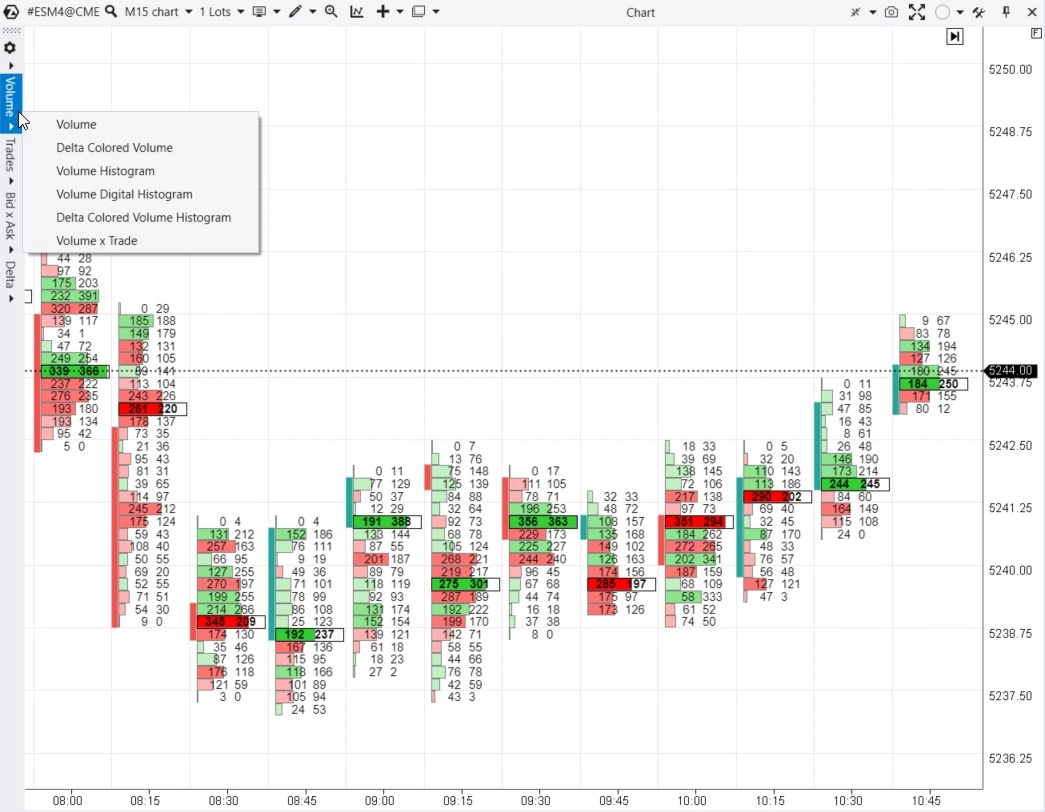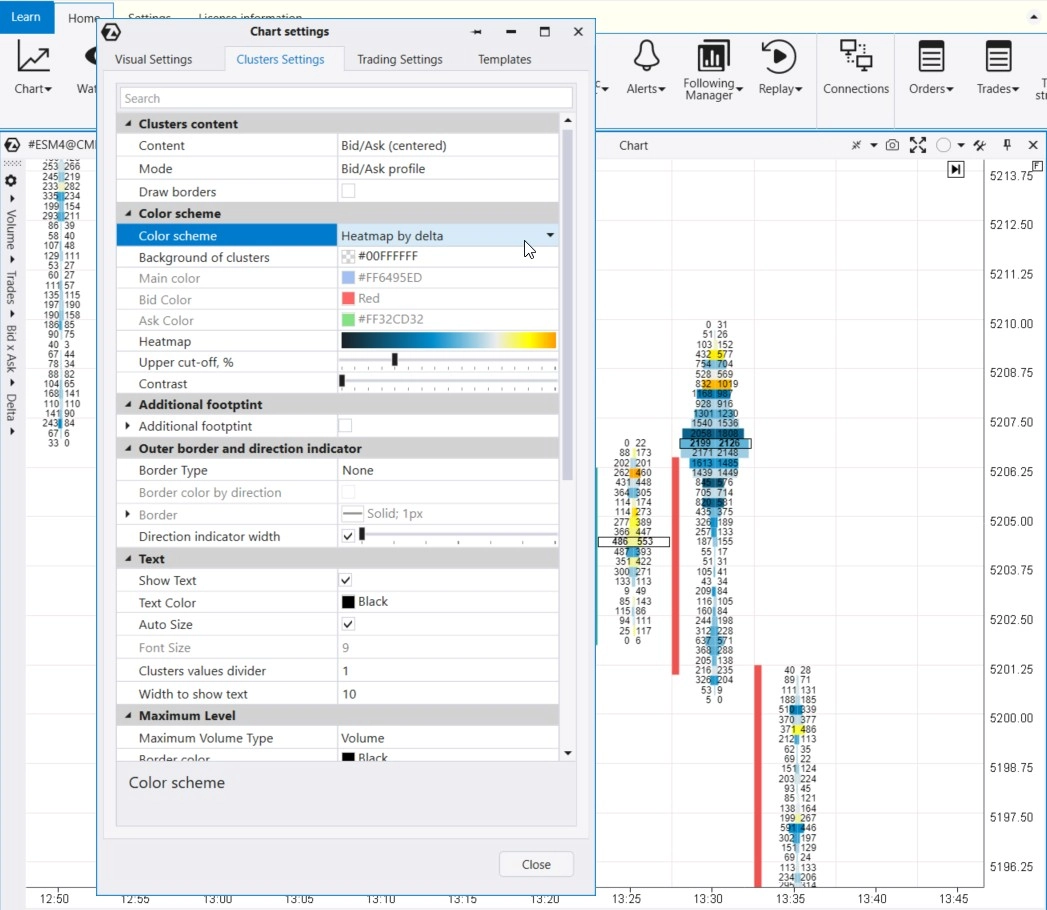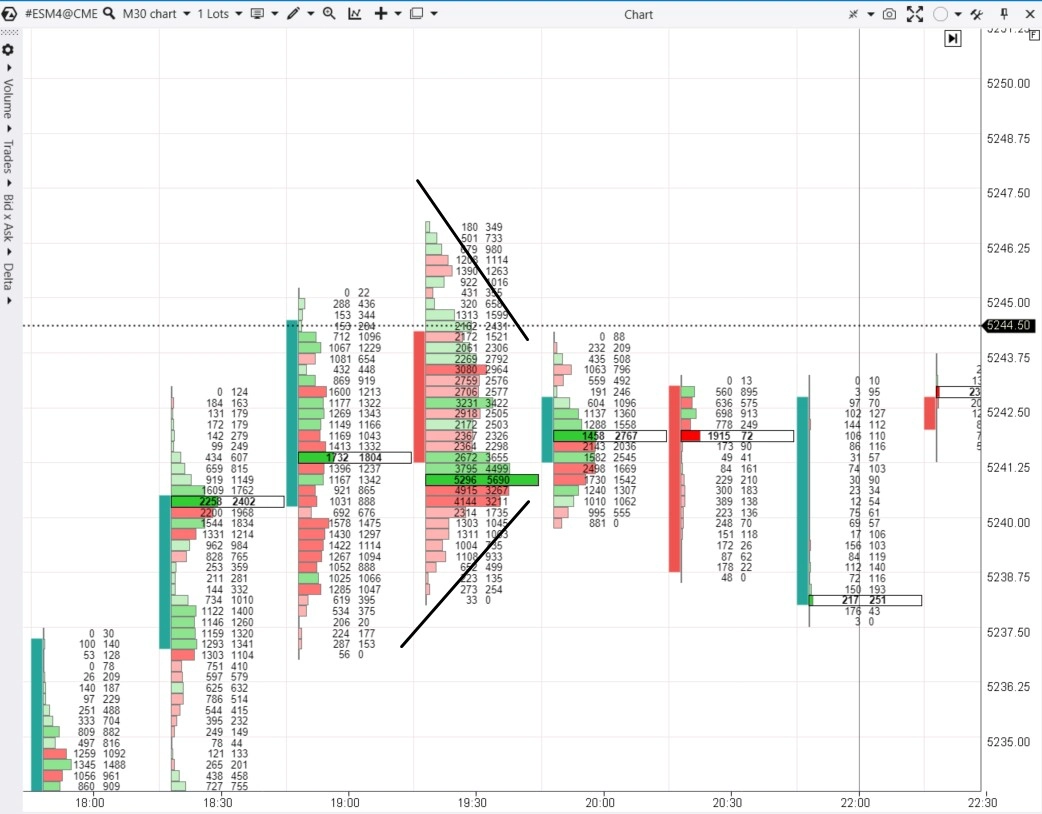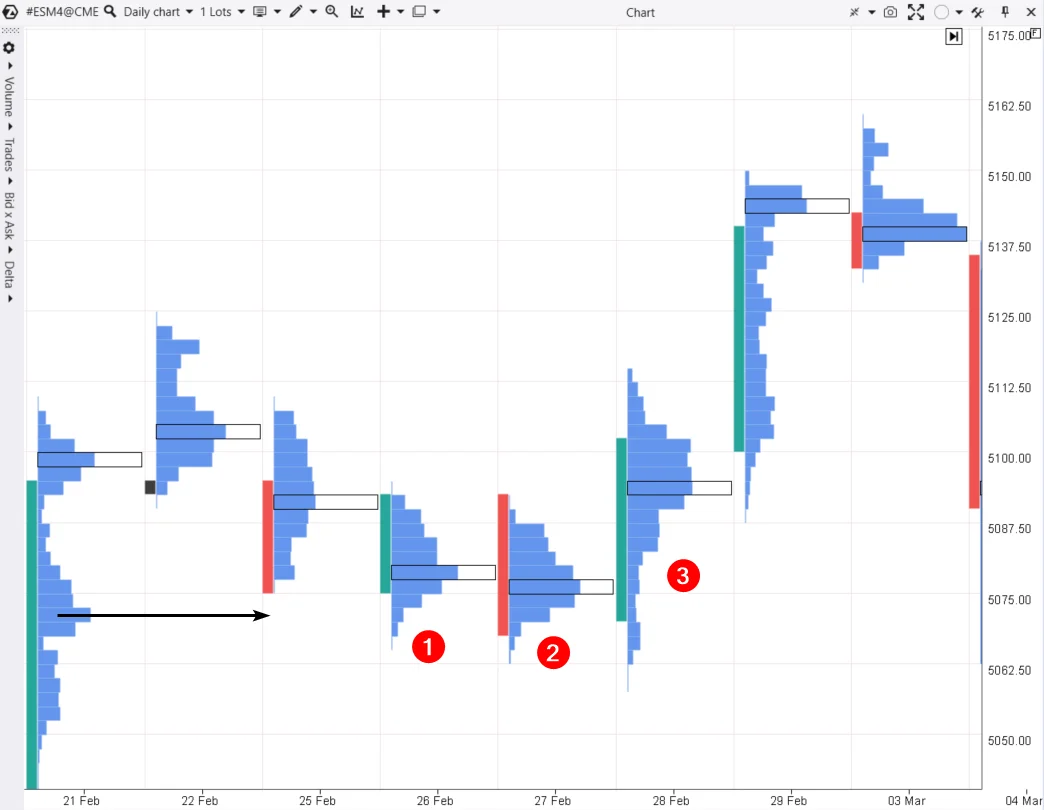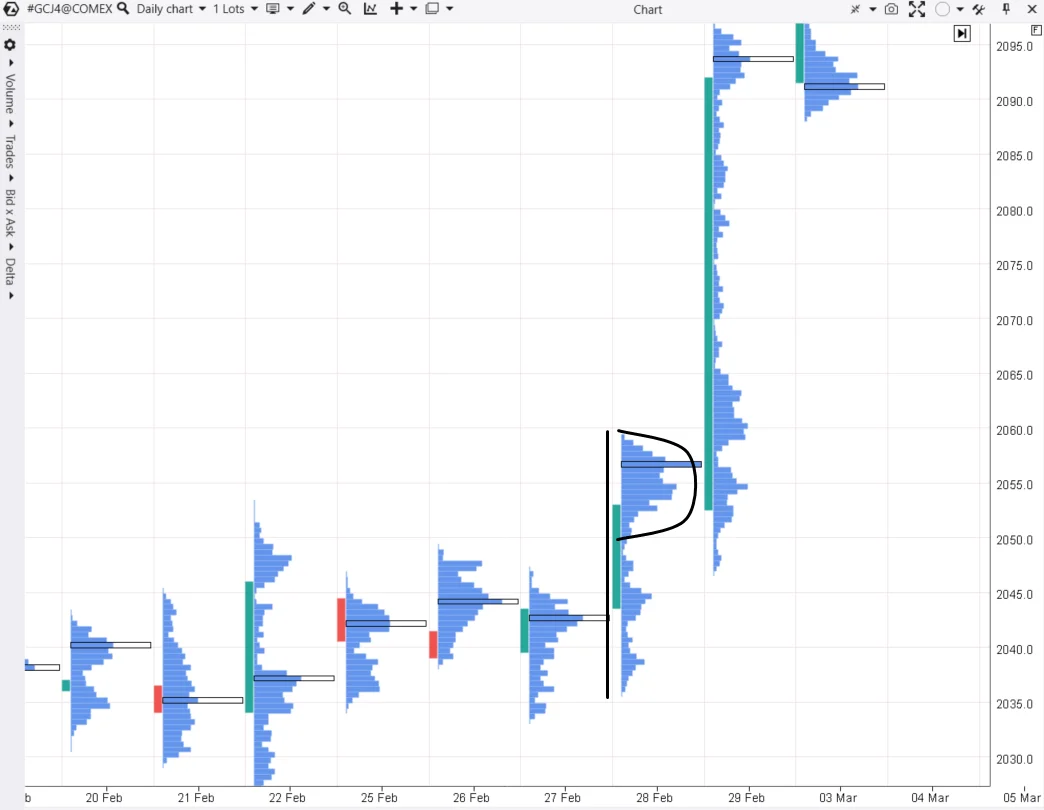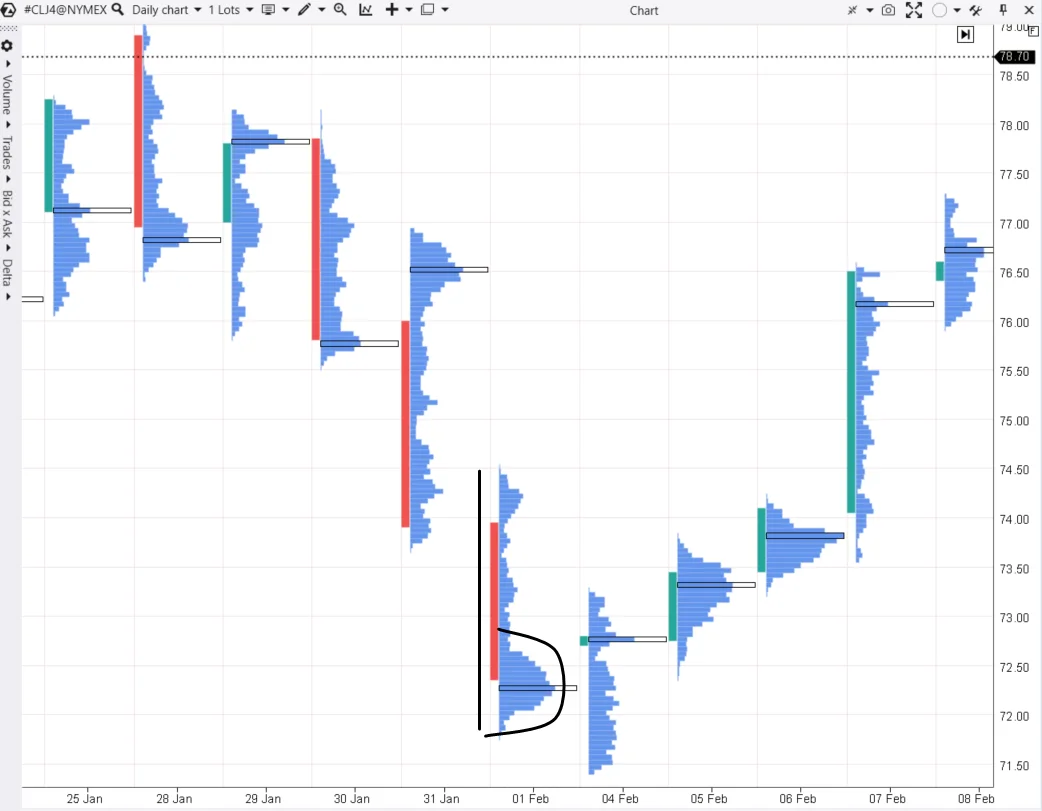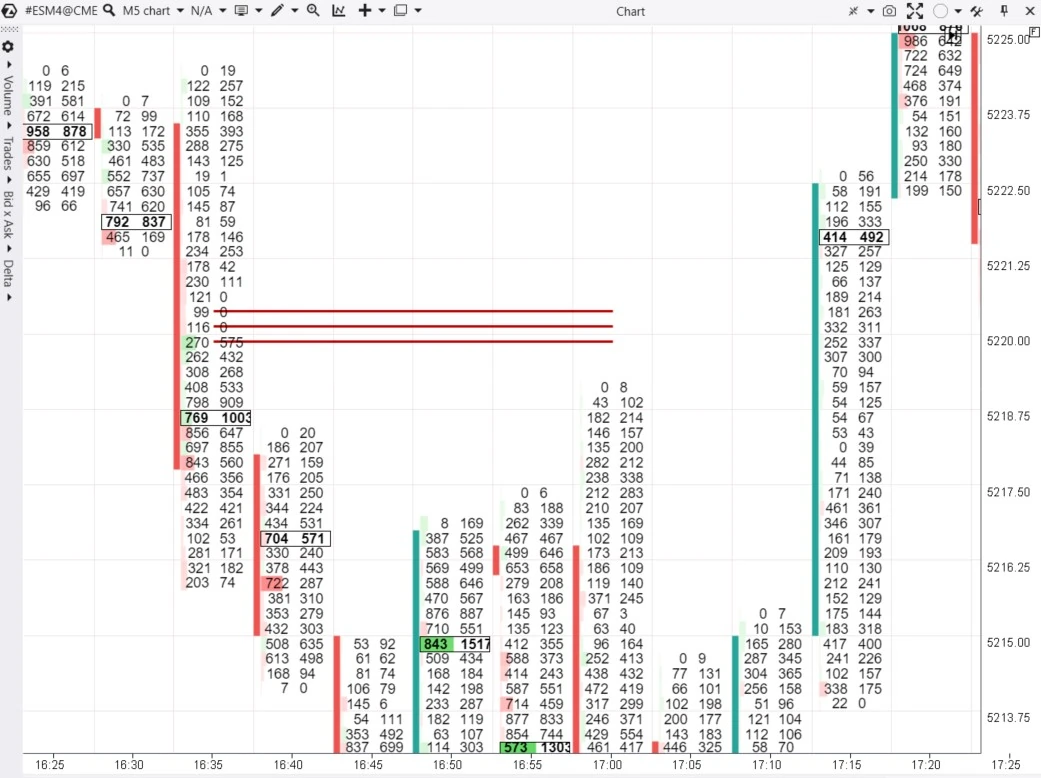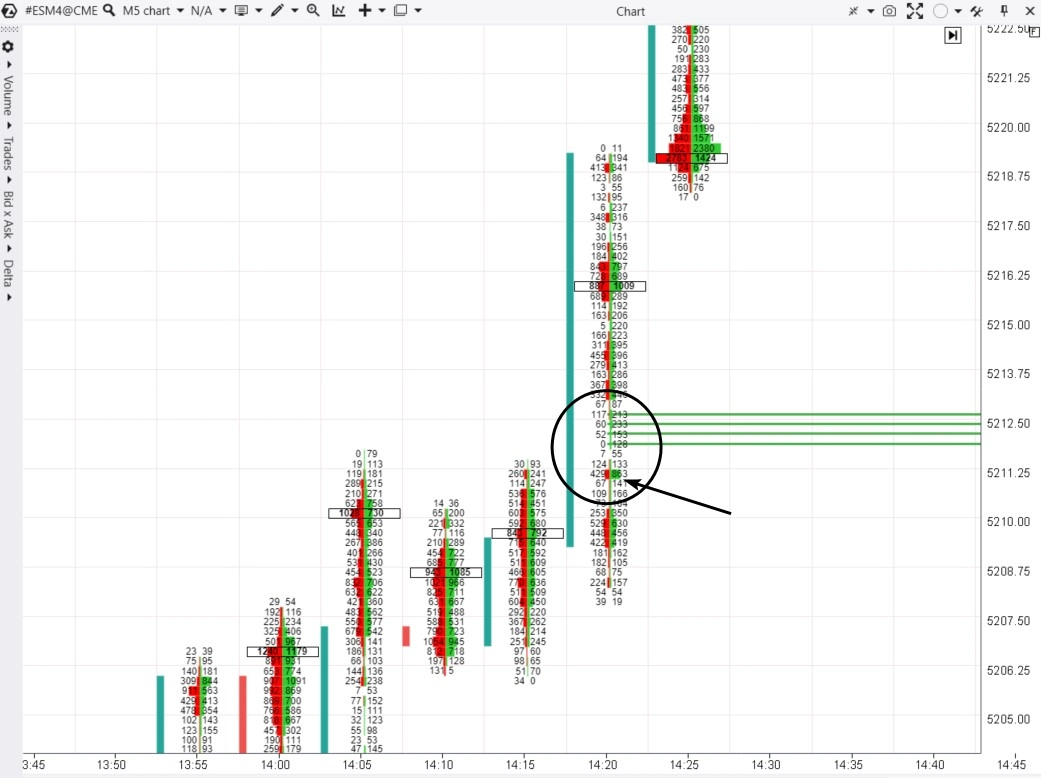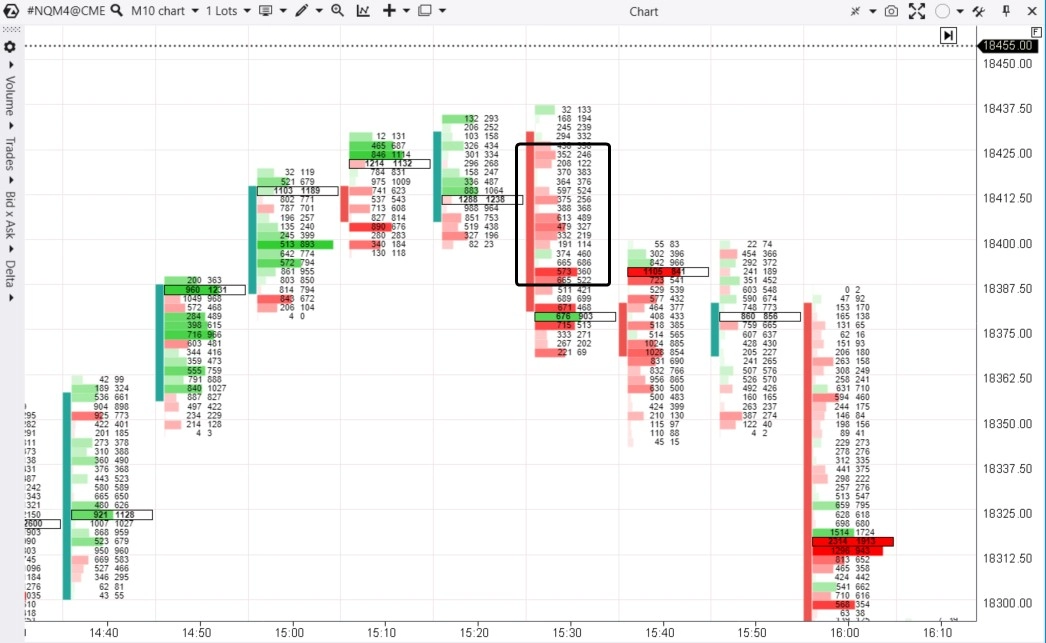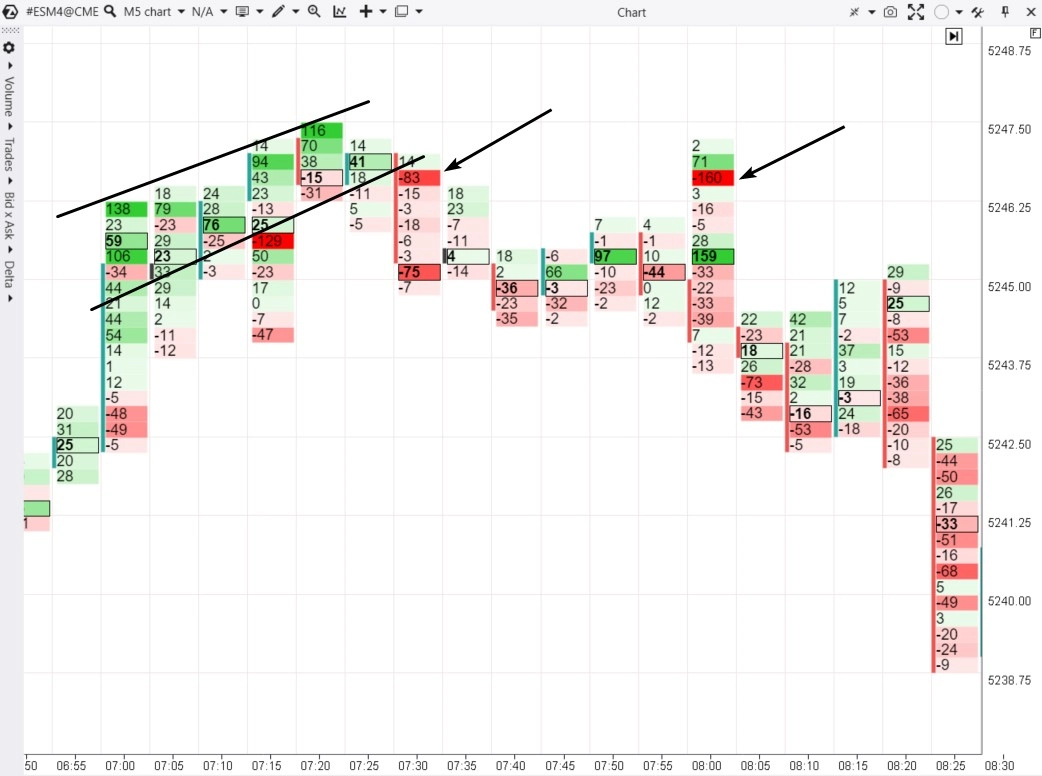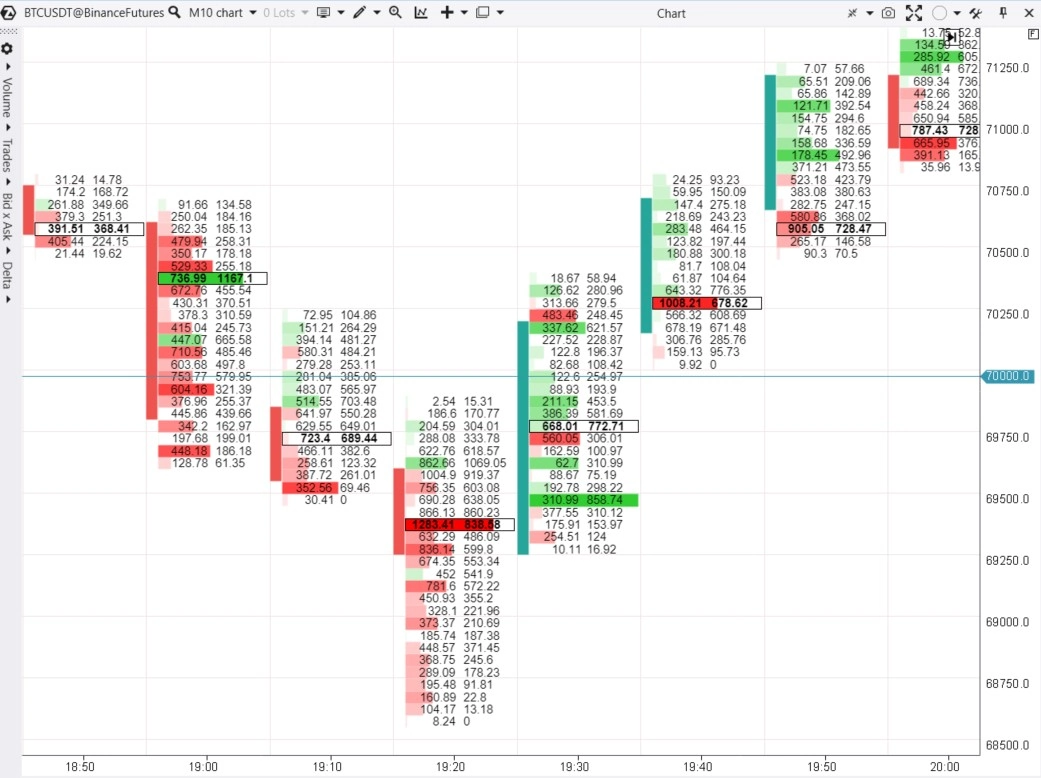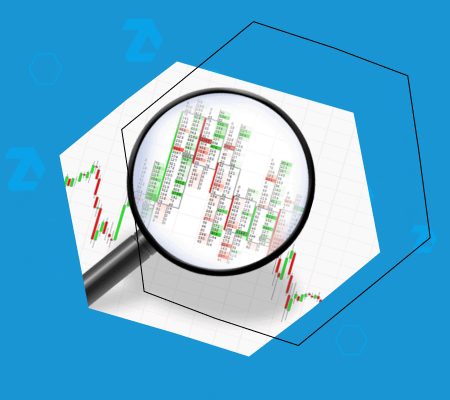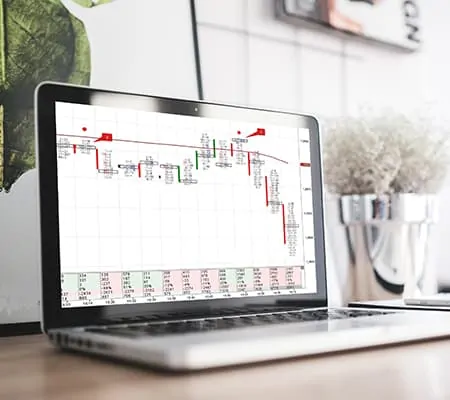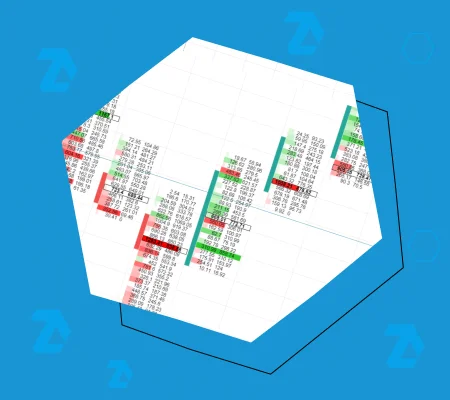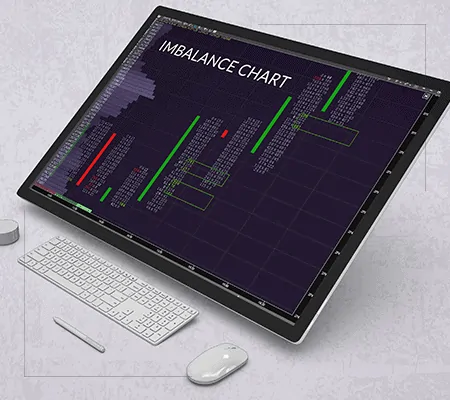Footprint patterns can vary significantly across different markets. Identifying the patterns always involves subjective judgment Therefore, before risking real money, make sure you are well-prepared and remember:
- Patterns do not guarantee profitable trades.
- Study footprint patterns across different timeframes and chart types.
- Take into account the fractal nature of the market.
- Always protect your capital by using appropriate strategies.
Working with cluster charts in the ATAS platform will expand your ability to learn to trade using footprint patterns.
Clear visualization. By default, ATAS highlights the largest clusters within a candle as they are relevant to many market participants and can significantly influence the price in the future. You can also customize fonts, colors, statistics, and footprint gradients.
Indicators. The ATAS platform offers the Cluster Search indicator, which assists in analyzing cluster charts. It provides various search criteria and colors to highlight clusters of interest. The Cluster Statistic indicator is equally useful.
Market Replay. Configure the Market Simulator to replay historical data. Practice identifying and interpreting footprint patterns as if trading were happening in real-time. It is a quick and safe way to enhance your trading skills.
Educational materials. Explore our blog and Knowledge Base for valuable recommendations on developing strategies for footprint trading. Do not forget to check out the Learn tab in the main menu of the ATAS platform – it has valuable insights for footprint trading. If you encounter any difficulties, feel free to contact us – our support team is always ready to help you.

